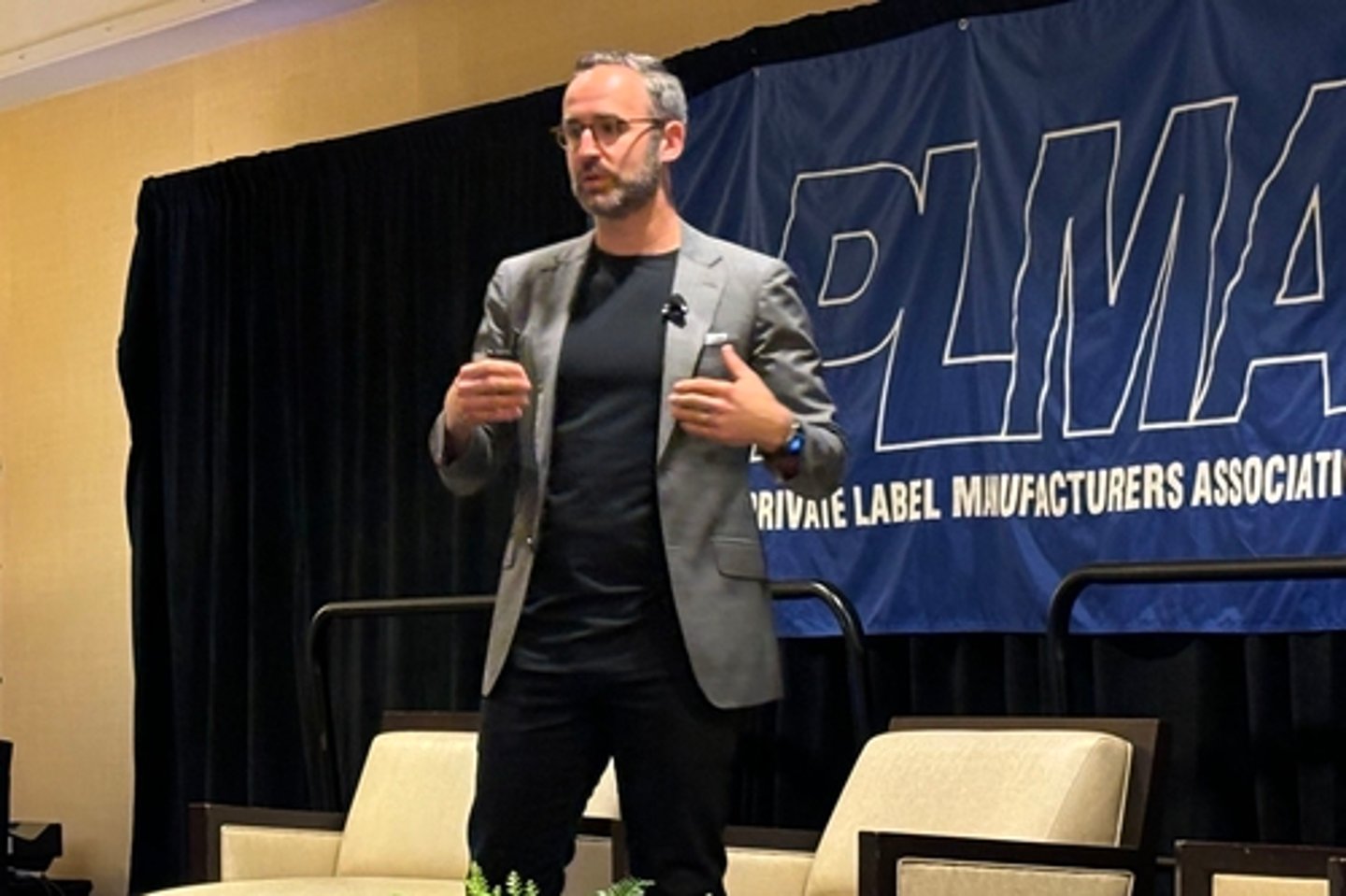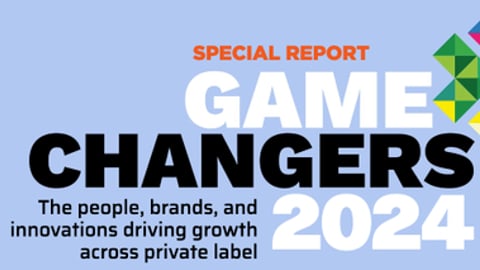Albertsons’ Brown Encourages New Thinking To Drive Private Label
“Private label has been on a tear recently, but I think we can do more.”
That was the simple, straightforward assessment from Brandon Brown, Albertsons’ senior vice president of Own Brands, during his presentation at the recent 2024 PLMA Annual Meeting & Leadership Conference in San Antonio, Tex.
During his nearly hour-long talk to conference attendees, Brown encouraged retailers and suppliers alike to think differently about their respective businesses in an effort to continue growing private label product sales and develop new items that are unique while also meeting consumer needs.
“How do we break free from the stigma of the past and take ourselves to the next generation?” he asked.
Currently, Brown oversees Albertsons’ $16.5 billion store brands portfolio that includes 11 brands and some 14,000 items. Earlier this year, the grocer expanded its private label assortment with the launch of its Signature SELECT Mix & Match assortment. Shoppers are able to choose from a selection of frozen entrees, sides and veggies and cook them together in a standard oven at 375 degrees for about 35 minutes. Product pricing ranges from $7.99 (veggies) to $12.99 (entrees).
“We have to build (retail) brands that are relevant to our consumers. That’s what this is about. We need to have a holistic brand strategy that focuses not just on the innovation and the product but also the marketing and the connection we have with consumers.”
— Brandon Brown, Albertsons
While new selections such as the Mix & Match assortment keep Albertsons’ store brand selection fresh, Brown is focused on the future and the opportunity to identify areas for future product development.
“What gets me really excited is not just the portfolio we have, but the portfolio we have that allows us to continue to build,” he said. “I still think there is a lot of white space and a lot of room to grow and develop. And that’s my plan for the next couple of years. Evolving our portfolio to something that is great.”
Break The Mold
While Brown noted the importance of retailers having a selection of staple items within a private label portfolio, he quickly added this alone is no longer sufficient. He stressed the importance of moving beyond products that are merely national brand equivalents and evolving products into brands.
“We have to build (retail) brands that are relevant to our consumers,” he said. “That’s what this is about. We need to have a holistic brand strategy that focuses not just on the innovation and the product but also the marketing and the connection we have with consumers.”
He also feels retailers and suppliers need to move past the long-standing good-better-best value proposition to avoid segmenting customers based strictly on price.
“This has worked for many retailers and for many years as a model to offer different types of products to our consumers,” he said. “But I don’t think this is right anymore. We have to evolve past this model.”
About Albertsons Private Label
- The grocer's store brands portfolio accounts for $16.5 billion in annual sales
- 11 brands
- 14,000 items
Brown continued, “When you build a great brand, you build loyalty, you build strength in that brand and then you take that brand strength and you combine it with the features and the reasons to believe in those items. That gives you differentiation and a willingness to pay and that allows you to have a tiered strategy, but it can't be originally based on price.”
Along the lines of evolution, the Albertsons VP feels the relationship between retailer and supplier also needs updating. Thinking along the lines of “leapfrogging” national brands and working to build store brands as brands in the eyes of consumers, Brown said it is imperative that the long-standing ways of doing business between retailers and suppliers change.
“I'll point the finger at us first, but I think it's a collective change,” he said. “We have to move from these tactical kinds of relationships where it's buying and selling and negotiations. How do you have a better partnership? How do we partner on growth? Let's not talk about the five products we're selling and the cost it should be. Let’s talk about how we grow in the next three years and how we partner across the value chain to find ways to reduce cost.”




